#Van Gogh 1991
Text

Mohammad Banissi (Iranian, 1991) - Self Portrait (Blue by Van Gogh) (2022)
100 notes
·
View notes
Text



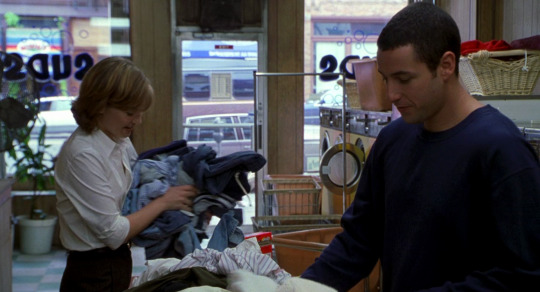






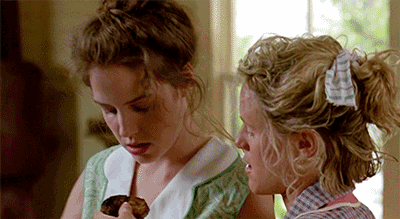
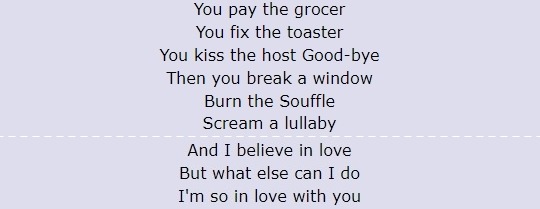
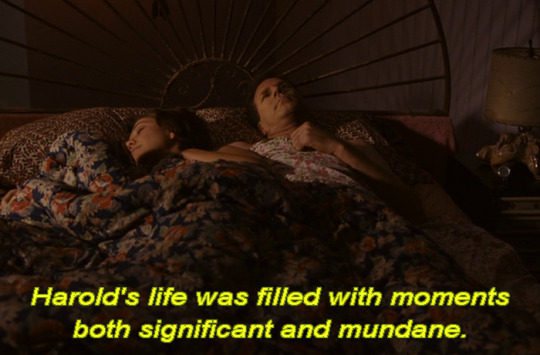





i love you. i'm glad i exist.
"just another day in paradise" by phil vassar // big daddy (1999) // "could we" by cat power // the world to come (2020) // "the way I am" by ingrid michaelson // apples by vishalandra dakur, 2018 // the big chill (1983) // romeo and juliet by richard brautigan // fried green tomatoes (1991) // "coming around again" by carly simon // stranger than fiction (2006) // the orange by wendy cope // the siesta by vincent van gogh, 1890 // "our house" by crosby, stills, nash, & young
23 notes
·
View notes
Text
I love when my faves play... (Pt. 6)
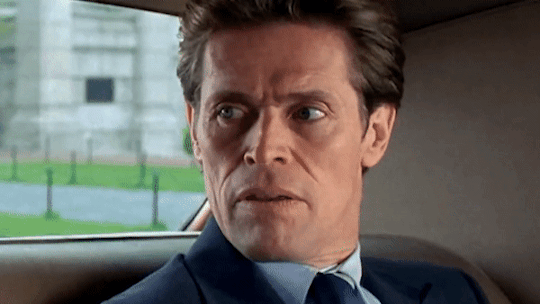


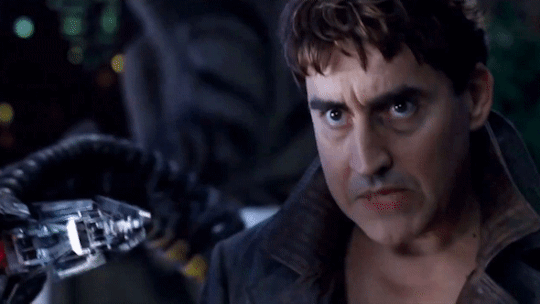
Mad Scientists
Norman Osborn (Spiderman, 2002)
Otto Octavius (Spiderman 2, 2004)
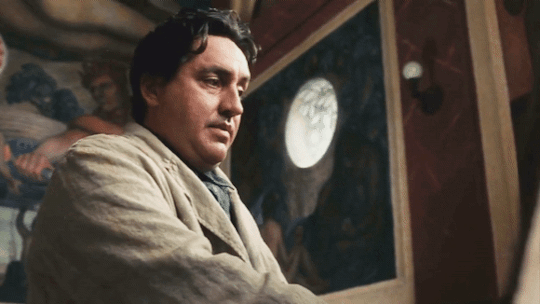

Artists
Diego Rivera (Frida, 2002)
Vincent Van Gogh (At Eternity's Gate, 2018)
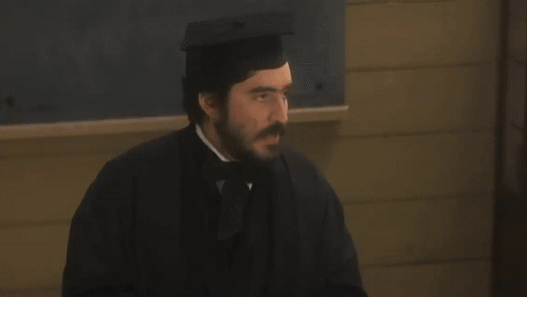

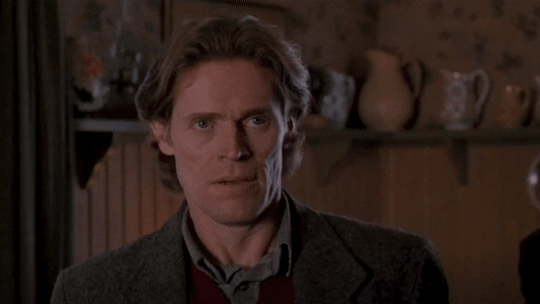

Professors
Oliver Syme (American Friends, 1991)
Stephen Arden (Species, 1995)
Rolfe Whitehouse (Affliction, 1997)
Charles Taylor (Fireflies in the Garden, 2008)
Stay tuned for part 7 (because there's actually more)! Or go back to part 5!
#okay so i lied#there will be more to this series#i missed a couple of categories#so i will be making up for that#hope you can forgive me#lol#anyway#hope you enjoy#when my faves play series#alfred molina#willem dafoe
26 notes
·
View notes
Text
Tagged by @snape-under-my-skin 💗 thank u for thinking of me. I loved to read a little about you ^^
Name: Meadow
Sign: Cancer
Time: 10:52
Fav band/artist: Mortiis, Clan of Xymox, Briqueville, Shortparis, Type O Negative, Turia, Gewalt, Gg:ull, Corpus Delicti
Last movie: Close My Eyes (1991)
Last show: the new episodes of Our Flag Means Death
When I created this blog: somewhere during covid times... it's been a while but time flies.
Other blogs: I have quite a few, each with a purpose haha. @meadow-moodboards @meadow-archive @meadow-selfship and then some to gather oc inspo like a pinterest board :)). i hang out a lot over on the selfship blog though.
Do I get asks: Sometimes, sporadically, but not typically.
Average hours of sleep: 8 mostly, but now i need more bc im menstruating
Instruments: None.
What I’m wearing: black blouse, black velvet skirt, tights, sunflower Van Gogh socks
Dream job: Writer, but only in the way that the writing is the dream job, not the whole 'selling your product' thing around it. Perhaps archivist is a better one, or medieval transcriber.
No pressure tags: @bogboyfriendbreadslice @vincent-sinclair-deserved-better @joelsgeetar @house-of-slayterr @devil-doll13
10 notes
·
View notes
Text
Time, Wondrous Time
The first time Ted Lasso and Rebecca Welton meet is not in her office at Nelson Road in 2020.
No, the first time Ted Lasso and Rebecca Welton meet is in the Van Gogh Museum in Amsterdam in 1991.
It had been his mother’s idea to go on the school trip. She had a love of travelling that Ted couldn’t wrap his head around and she wanted to share that with him so he could go and live out some of her dreams for her.
At least, that’s what she said.
Ted knows that the real reason that she sent him off to Amsterdam was to get him out of the house.
It’s funny.
Before everything with his father went down, his mother used to scold him for running around town with his friends, begging him to just stay inside for one night.
Now, she begs at his bedroom door every night for him to come down and eat dinner.
It’s funny in the worst way possible.
His mother had told him that she didn’t want him to miss out on any memories with his classmates and Ted didn’t have the heart to tell her that he didn’t care much about memories. In fact, these days, Ted doesn’t care much about anything anymore.
That’s how he ends up in some museum having a staring contest with some damned sunflowers.
“What did Van Gogh ever do to you?” he hears a British accent pipe up from behind him.
He turns to the source of the sound and finds a girl about his age dressed in a school uniform.
Her blonde hair is tied up in a neat ponytail with a couple of stray pieces framing her face. She’s so tall that he has to check that she isn’t wearing six-inch stilettos. She flashes him a smile and he can see the pink bands of her braces.
His palms grow clammy and he wipes them on his slacks as sneakily as possible.
“Uh…I...” he stammers, “Just don’t really get the appeal of sunflowers, there’s about a bajillion better flowers to choose from.”
She barks out a laugh.
“Is that your real accent?”
His heart sinks.
He should’ve known better. How on Earth would a girl like her, who's probably from some expensive part of England, be into the whole Yankee Doodle situation he's got going on?
Ted simply nods before turning his attention back to Van Gogh and his damned sunflowers.
“I like it.” she says warmly as she walks over to stand beside him, “Where’s it from?”
“Uh, Kansas.” he answers, “What about you? Where are you from?”
“Surrey.”
“Oh, I was just asking where you’re from.” he repeats as he faces her front on, enunciating a little bit more.
She gives him an odd look.
“Surrey… As in South East England.”
“Oh!” Ted exclaims, “I thought you were just saying sorry!”
She laughs loudly, breaking some silent rule or two in the museum as they garner the attention of other patrons.
Ted pays them no mind as he stares at the way she throws her head back chuckling. He smiles when he hears her snort.
“What’s your name?” he asks.
“Becca Welton.”
He offers his hand and Becca accepts it, shaking it firmly like she’s probably been taught in those posh etiquette classes.
“Theodore Lasso.”
In the corner of the room, he sees girls dressed in the same uniform as Becca begin to make their way to an adult holding a clipboard.
“Hey Becca, I think your class might be leaving.”
He points in the direction of the group. As soon as Becca makes eye contact with the group, they begin to motion her over urgently, tapping insistently at imaginary watches.
“Oh, shit, thanks” she answers, “It was nice meeting you, Theodore.”
For a moment, Becca doesn’t make any move to leave despite her words indicating a goodbye. Instead, she stares at his face intensely. For a moment, Ted's worried he broke some cultural norm and Becca is going to sock him in the jaw for it.
Then, she grabs a hold of both of his shoulders and reels him in to press a short kiss to his cheek.
Becca backs away shortly after, burning bright red. She turns away without another word and rushes over to her class, her ponytail flicking back and forth as she goes.
Dazed, Ted brings a hand up to his cheek to feel the sticky imprint Becca’s lip gloss left.
Maybe, Amsterdam wouldn’t be all bad.
13 notes
·
View notes
Text
This week I attended an animation workshop where we started developing 10 second animations. The first stage of my development was to create an idea for animation and decide on a style. Since there wasn’t much time for the idea, I decided to do something simple but at the same time focus on what interests me, namely the image of the atmosphere and camera movement, since I love films and how different camera techniques are used in cinema I decided to make a model of the room, along which the viewer’s gaze will move and animate various objects to convey the life and naturalness of the room and the movement in it. For example, it seems to me that it would be very interesting to animate individual objects, such as a curtain that sways from a light breeze or the movement of hands on a clock to create atmosphere through the movement of specific objects. Since the main object in my project is a room, I decided to include several examples of works by artists who depicted rooms in their works such as The Bedroom, 1888 Vincent Van Gogh

Interior With Restful, 1991 Paintings Roy Lichtenstein

The Red Studio, 1911 by Henri Matisse

Interior (My Dining Room), 1909 Wassily Kandinsky

Room in Brooklyn by Edward Hopper

and I also liked the way filmmakers create sketches of different spaces to recreate them. Here are some examples from Bond movies:

The most suitable style for me was the haze used in the film A Scanner Darkly. 2006. Directed by Richard Linklater.



I find the combination of animation and real footage very interesting. After that I decided to use a similar technique in my work. For this, I needed to model the room. I used a website roomtodo.com where I was able to create a room exactly the way I needed it, adding all the items I needed.

After that, I want to start working on stylization and framing the trajectory of the frames.
4 notes
·
View notes
Text
When the media consumes you: June Edition
Books:
Neverwhere by Neil Gaiman (⭐⭐⭐ .75)
The Left Hand of Darkness by Ursula K Le Guin (⭐️⭐️⭐️⭐️ .5)
Resurrecting the Shark: A Scientific Obsession and the Mavericks Who Solved the Mystery of a 270-Million-Year-Old Fossil by Susan Ewing (⭐️⭐️⭐️ .75)
Homesick for Another World by Ottessa Moshfegh (⭐️⭐️⭐️ .5)
Dune: Messiah by Frank Herbert (⭐️⭐️⭐️⭐️ .5)
The Trial by Franz Kafka (⭐️⭐️⭐️⭐️ .5)
My Brilliant Friend by Elena Ferrante (⭐️⭐️⭐️⭐️ .25)
Follow me on The Storygraph
Articles:
The fugitive heiress next door (The Washington Post)
A catatonic woman awakened after 20 years. Her story may change psychiatry. (The Washington Post)
A mysterious human species may have been the first to bury their dead (National Geographic)
The world changing trees of Vincent Van Gogh (The New Yorker)
Scientists have found signs of a new kind of gravitational wave. It's really big (NPR)
What the Supreme Court's rejection of student loan relief means for borrowers (NPR)
Films and Television:
Star Trek (2009) (⭐️⭐️⭐️ .75)
Stark Trek: The Next Generation (1987-1991) (⭐️⭐️⭐️⭐️)
5 notes
·
View notes
Photo

Films Watched in 2023:
49. Van Gogh (1991) - Dir. Maurice Pialat
#Van Gogh#Maurice Pialat#Jacques Dutronc#Alexandra London#Bernard Le Coq#Gérard Séty#Corinne Bourdon#Vincent van Gogh#Films Watched in 2023#My Post
3 notes
·
View notes
Text




Outre son activité de chanteur-compositeur, Jacques Dutronc a une activité cinématographique très intense a partir de 1972 . En 1976, il participe au film de Claude Lelouch: « Le bon et les méchants » dont le scénario repose sur un gang de cambrioleurs utilisant des tractions avant , puis que la guerre 40-45 implique dans des activités de résistance . On retrouve également dans ce film , la très jolie Marlène Jobert .
Jacques Dutronc participera à d’autres films dont l’histoire de Van Gogh , sous la direction de Maurice Pialat, ce qui lui permettra de gagner un César du meilleur acteur en 1991 . Il participera à « Paradis pour tous » avec Patrick Dewaere et aussi à « Ok patron! » avec Mireille Darc dont le 45t est repris plus bas dans ce blog. Il prendra part au film « l’important c’est d’aimer » , son plus gros succès au box-office, où il donne la réplique à Romy Schneider.
Le 45 t « La ballade du bon et des méchants » a une valeur moyenne Discogs de 2,35€ alors que le 33t a une valeur moyenne Discogs de 7 € . La musique est signée par Francis Lai .
#vinyls jacques dutronc#1970s music#70s#cinéma dutronc#jukebox#maurice pialat#romy schneider#patrick dewaere#films Jacques Dutronc
1 note
·
View note
Text
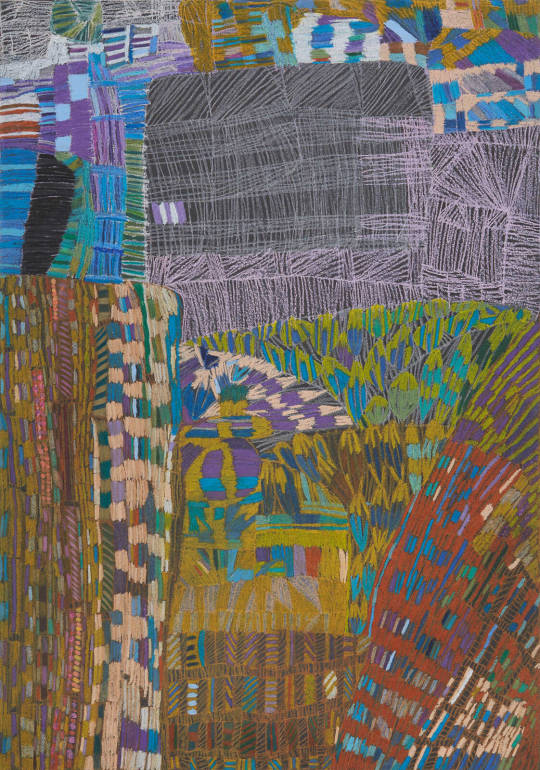
Mohammad Banissi (Iranian, 1991) - Untitled (Church at Auvers by Van Gogh) (2022)
90 notes
·
View notes
Text
Il grande attore britannico, interprete di film quali Gandhi di Richard Attenborough, Tradimenti di David Hugh Jones, L’isola di Pascali di James Dearden, Bugsy di Barry Levinson, Schindler’s List e A.I. Intelligenza artificiale di Steven Spielberg, Oliver Twist di Roman Polanski e molti altri, compie ottant’anni.
Nato nello Yorkshire - in Inghilterra - nel 1943, Krishna Pandit Bhanji - meglio noto come Ben Kingsley -, studia al Pendetlon College e si avvicina giovanissimo al teatro debuttando all’Aldwych Theatre, per poi entrare a far parte della Royal Shakespeare Company con la quale, dalla fine degli anni Sessanta e poi per i quindici anni successivi, sarà interprete prevalentemente shakespeariano. Nello stesso periodo lavorerà anche in film e serie tv.
Esordisce al cinema in un ruolo secondario all’inizio degli anni Settanta in Gli ultimi sei minuti (1972) di Michael Tuchner, per poi tornare, per circa un decennio, sul palcoscenico e in televisione.
Il suo vero esordio cinematografico avviene all’inizio degli anni Ottanta, quando è superlativo protagonista di Gandhi (1982) di Richard Attenborough, con cui vince un meritatissimo Oscar come Miglior Attore Protagonista. Uno di quei casi in cui, anche al di là della bravura dell’attore, la fusione fra personaggio e interprete è tale che lo spettatore/spettatrice, pensando al personaggio, automaticamente pensa anche al suo interprete (come avviene nel caso di Vincent Van Gogh/Kirk Douglas in Brama di vivere di Vincente Minnelli, Onassis/Anthony Quinn in Il magnate greco di Jack Lee Thompson, Nelson Mandela/Morgan Freeman in Invictus di Clint Eastwood, Daniel Day-Lewis/Abramo Lincoln in Lincoln di Steven Spielberg).
Seguono numerosi ruoli cinematografici e televisivi, che dimostrano abbondantemente l’inesauribile talento di uno fra i più grandi attori della sua generazione. Fra le pellicole più significative Tradimenti (1983) di David Hugh Jones, L’isola di Pascali (1988) di James Dearden, in cui offre una prova di grande magnetismo nel ruolo di un inascoltato informatore dell’impero ottomano alla vigilia della guerra, la commedia gialla Senza indizio (1988) di Thom Eberhardt, Bugsy (1991) di Barry Levinson, con Annette Bening.
Negli anni Novanta due fra le sue migliori performances, ovverosia il contabile Stern in Schindler’s List (1993) di Steven Spielberg, con Liam Neeson e Ralph Fiennes, e il misterioso dottor Miranda in La morte e la fanciulla (1995), tratto dal dramma teatrale omonimo di Ariel Dorfman e diretto da Roman Polanski, in cui esprime perfettamente l’ambiguità di un personaggio che oscilla fra vittimismo e spietatezza.
Molto significative anche le sue apparizioni in A.I. Intelligenza artificiale (2001) di S. Spielberg, Il trionfo dell’amore (2001) di Clare Peploe, Oliver Twist (2005), tratto dal romanzo omonimo di Charles Dickens e diretto da Roman Polanski, in cui, con barba rossa e semisdentato, interpreta il vecchio usuraio Fagin, e nel ruolo di un gangster in Slevin - Patto criminale (2006) di Paul McGuigan.
Fra gli altri film ricordiamo Tartaruga ti amerò (1985) di John Irvin, Harem (1985) di Arthur Joffé, Maurice (1987) di James Ivory, Testimony (1988) e The Children (1990) di Tony Palmer, Slipstream (1989) di Steven Lisberger, Una vita scellerata (1990), Quinto macaco (1990) di Eric Rochat, I signori della truffa (1992) di Phil Alden Robinson, con Robert Redford e Sidney Poitier, Dave - Presidente per un giorno (1993) di Ivan Reitman, In cerca di Bobby Fischer (1993) di Steven Zaillian, Specie mortale (1995) di Roger Donaldson, La dodicesima notte (1996) di Trevor Dunn, The Assignment – L’incarico (1997) di Christian Duguay, Fotografando i fantasmi (1997) di Nick Willing, The Confession (1998) di David Hugh Jones, Da che pianeta vieni? (2000) di Mike Nichols, Regole d’onore (2000) di William Friedkin, La casa stregata (2002) di William Sachs, Tuck Everlasting - Vivere per sempre (2002) di Jay Russell, La casa di sabbia e nebbia (2003) di
Vadim Perelman, con cui ottiene una nomination all’Oscar come Miglior Attore non Protagonista, Thunderbirds (2004) di Jonathan Frakes, Il risveglio del tuono (2005) di Peter Hyams, L’ultima legione (2007) di Doug Lefler, Transsiberian (2008) di Brad Anderson, Fifty Dead Men Walking (2008) di Kari Skogland, Shutter Island (2010) e Hugo Cabret (2011) di Martin Scorsese, Il dittatore (2012) di Larry Charles, Walking With the Enemy (2013) di Mark Schmidt, Medicus (2013) di Phillip Stoltz, War Story (2014) di Mark Jackson, Exodus - dei e re (2014) di Ridley Scott, e il cortometraggio All Hell he King (2014) di Louis Esposito.
In epoche più recenti è apparso in film come The Walk (2015) di Robert Zemeckis, Autobahn - Fuori controllo (2016) di Eran Creevy, Il tenente ottomano (2017) di Joseph Ruben, War Machine (2017) di David Michod, Giochi di potere (2018) di Per Fly, Shang-Ci - La leggenda dei dieci anelli (2021) di Destin Daniel Cretton, ispirato al personaggio omonimo dei fumetti Marvel Comics, Dalìland (2022) di Mary Harron , ispirato alla vita di Salvator Dalì, Jules (2023) di Marc Turtletaub, e nei cortometraggi La meravigliosa storia di Sugar (2023) e Veleno (2023) di Wes Anderson, con Ralph Fiennes.
Molto attivo anche in televisione, a partire da fine degli anni Sessanta/inizio Settanta appare in numerosi film tv - A Misfortune (1973) di Ken Loach, Antonio e Cleopatra (1974) di Jon Scoffield, Thank You, Comrades (1978) e The War That Never Ends (1991) di Jack Gold, Le allegre comari di Windsor (1982) di David Hugh Jones, Kean (1982) di Raymund FitzSimons, Camille (1984) di Desmond Davis, Silas Marner: the Weaver of Raveloe (1985) di Giles Foster, Il treno di Lenin (1988) di Damiano Damiani, Murderers Among Us: the Simon Wiesenthal Story (1989) di Brian Gibson, Giuseppe (1995) e Mosè (1995) di Roger Young, Weaponof Mass Distraction (1997) di Stephen Surjik, La bottega degli orrori di Sweeney Todd (1997) di John Schlesinger, Delitto e castigo (1998) di Joseph Sargent, Alice nel paese delle meraviglie (1998) di Nick Willing, Mrs. Harris (2005) di Phyllis Nagy - ed in alcuni episodi di serie e miniserie.
1 note
·
View note
Text
Pinceladas Introdutórias Sobre a Figura da Artista Projetada em Tela
Me é curioso o paradoxo que parece surgir do fato de que, mesmo sendo uma mídia pautada pelo visual, a representação cinematográfica do objeto artístico e de seu ato de criação, na maioria dos casos, beira o alegórico. Não por falta de tentativa, não há real escassez de filmes com personagens que aventuram-se pelas artes plásticas - ao menos não em se tratando de personagens masculinos - mas o cinema num geral parece não saber lidar com o objeto artístico como algo natural, fazendo do mesmo algo aquém da realidade, algo destoante, e tratando a prática de criação deste como desinteressante ao retrato na tela.
Não que o objeto artístico seja mero adereço cenográfico, muitas vezes ele é a coisa que dá movimento a toda trama do filme. A evidência de um crime, a pista de alguma charada, o retrato misterioso de alguém morto ou desaparecido, de alguém pelo qual o protagonista está à procura, a interrogação que paira sobre a trama e que nem por isso deixa de ser algo deslocado no contexto do filme.
Essa distância também recai sobre os realizadores de tais obras. Loucos, problemáticos ou excêntricos, a prática artística denota que o personagem tem outras ambições, que ele é diferente, incomum, inconformado. Não à toa Van Gogh lidera o número de reencarnações cinematográficas, esse personagem em estado de crise é uma reivindicação quase automática da narrativa por conflito, um retrato típico do gênio incompreendido que certamente colabora a noção do mito do artista ainda na contemporaneidade.
No caso das mulheres nesse cinema, como parece ocorrer com qualquer retrato feminino não conformista, destinam-se à reclusão, solidão, frustração e um eterno estado de suspensão. Tal qual exemplificação nas personificações de Amy March em Adoráveis Mulheres (2019/1994/1949), ou Juliette Binoche em Palavras e Imagens (2013) e Os Amantes de Pont-Neuf (1991).
Como sugere Roberta White, em sua análise das narrativas literárias que exploram a figura da pintora, “essas imagens consistem em variações sobre um tema que pode ser chamado de liminal, suspenso e inacabado” (WHITE, p. 19), apresentando a artista sempre em um estado de transição ou dubiedade e sua obra sempre como incompleta ou fragmentada. White também indica que de maneira semelhante, autores de personagens masculinos apresentam arte como algo arriscado e incompatível com uma vivência familiar tradicional, e seus personagens costumam ser a síntese da figura romântica do artista apaixonado e rebelde vivendo radicalmente isolado nos limites ou margens da civilização. A grande diferença, ela argumenta:
[...] é que o artista masculino fictício comete um afastamento mais violento da sociedade da qual ele, por direito de nascença, faz parte. O isolamento da artista feminina é distinto na medida em que, na maioria das vezes, ela não o escolhe, tendo sido excluída dos centros de poder e autoridade em função de seu gênero. (WHITE, p. 27)
Isso quando as personagens são explicitamente artistas, pois na maior parte dos casos a denominação é aferida de maneira quase arbitrária, não havendo nada em tela que prove tal atividade senão por uns desenhos pendurados na parede ou coisa do tipo. Quase sempre essas supostas pintoras, escultoras, designers e afins são personagens secundárias, e mesmo que elas sejam a protagonista do filme não significa que a temática “arte” esteja a frente da narrativa, é muito mais provável que algo como a “necessidade de um romance” seja o carro chefe da trama.
Filmes sobre artistas tendem a despender mais tempo nos contextos que rodeiam a vida da figura do que no ato de produção artística em si, mas isso não justifica representações em que o fato é tão ínfimo a vida da personagem, tal qual em Deixe a Luz do Sol Entrar (2017), ou tão ridicularizante, como ao que se rebaixa Midge Wood em Vertigo (1958), isso antes dela desaparecer do filme sem explicação. Nem mesmo o excepcional longa-metragem de Céline Sciamma, Retrato de uma Jovem em Chamas (2019), escapa totalmente dessa premissa romântica, apesar desta ser uma obra fora da caixa em diversos aspectos, principalmente o retrato que faz do ofício, das alusões a história da arte, da utilização da pintura como parte da força narrativa e da criação de uma personagem ficcional no lugar da figura da pintora, coisa que como a própria Sciamma sabe não foi feito com tanta frequência, como ela mesma disse: “inventar uma pintora, isso raramente foi feito, e agora eu sei por quê, porque é muito difícil!”
A utilização de figuras históricas, como na cinebiografia, que comporta a maior parte das obras que tratam do tema, logo de saída cria uma falsa aproximação entre a realidade da artista no mundo real e o que o filme apresenta como sendo essa realidade, pelo fato de que as figuras apresentadas nestes filmes, além de geralmente serem artistas de séculos passados em que o ambiente de produção era bastante distinto do atual, são por si só personagens extraordinárias. Personagens completamente ficcionais se distinguem pelo fato de que, como sugere White:
[...] são uma projeção do autor da ideia de arte e da reivindicação das mulheres por um lugar no mundo da arte. Ao contrário de um pintor de carne e osso, o artista ficcional existe no reino da ideia e imaginação, é tanto produto quanto criador de arte. Quando a artista de ficção é uma mulher, ela inevitavelmente incorpora a postura política do autor. (WHITE, p.14)
Nas representações cinematográficas, um ato que fica bastante claro nessa postura politizada é quando a personagem encontra ou reivindica um espaço para exercer a prática artística. Demarcando um espaço que parte de uma necessidade operacional na realidade e que na narrativa assume a função de cenário onde dilemas criativos, psicológicos ou sociais da personagem serão confrontados.
No cinema, talvez por sua generalizada preocupação com espaço, esse estúdio ou ateliê abarrotado com as vivências da artista parece até mais relevante que a própria peça de arte que nele se produz. Mesmo personagens bastante secundárias, como Maude Lebowski em O Grande Lebowski (1988) ou Adele Lack em Sinédoque, Nova York (2008), tem seus estúdios evidenciados. Mais drasticamente, em The Artist’s Wife (2019), a retomada da protagonista Claire a pintura, exige que ela não somente arranje um espaço, como um longe e velado de seu marido, também pintor. Virginia Woolf estava mais do que certa quando escreveu que “uma mulher deve ter dinheiro e um teto todo seu, se ela quiser escrever ficção”. Havemos de aplicar isso a qualquer circunstância quando discutindo-se arte.
Na representação da pintora Úrsula na animação O Serviço de Entregas da Kiki (1989), por exemplo, fica bem claro a enorme relevância que esse espaço tem na manutenção artística e emocional não só da personagem como de outros, algo que reverbera conhecimento de causa da equipe de realizadores do filme, que a bem dizer é formada basicamente por artistas plásticos, não à toa essa é uma das poucas obras em que a prática artística é apresentada de maneira apaixonada, libertadora e empoderadora mesmo que o filme não seja sobre arte e Úrsula seja apenas uma personagem secundária.
São muitos os elementos que contribuem para a escassez de imagens que forneçam um contraponto às relações de poder e estereótipos, mas não se deve descartar que a sequela do trato que as mulheres receberam ao longo da história ainda é um dos grandes agentes nessa operação. Como nos informa Silvia Federici, em seu estudo da relação da caça às bruxas e o advento do capitalismo, por efeito dessa caça e controle sobre o corpo feminino, "a definição das mulheres como seres demoníacos e as práticas atrozes e humilhantes a que muitas delas foram submetidas deixou marcas indeléveis em sua psique coletiva e em seu senso de possibilidades” (FEDERICI, p. 187).
No que diz respeito a história da arte, desde suas primeiras escrituras, seus agentes põem as mulheres à margem do fazer artístico, exigindo que rompam uma barreira muito além de sua criatividade se quisessem ativamente fazer parte dessa narrativa. Por mais que no passado pintar, por exemplo, fosse um “dote” feminino apreciado, principalmente dentro da classe burguesa e aristocrática, pintar profissionalmente era impensável. As diretrizes sociais que governavam a vida das mulheres estavam tão embrenhadas no consciente popular, que o simples elogio de pessoas próximas tenderia a bastar de validade aos “hobbies artísticos”, e estas mulheres acabavam não instigadas a por suas peças à prova em um ambiente profissional.
Se insistisse em pintar, não poderia ingressar na academia ou mais tarde ingressaria numa turma totalmente segregada onde os aprofundamentos dos estudos eram limitados. Dificilmente seria aceita em alguma guilda que lhe desse aval para viver da prática, e era quase certo que sofresse humilhações que se não destruíssem sua integridade pessoal, poderiam destruir sua carreira profissional, estas por sua vez limitadas a florais, pinturas de gênero e, na melhor das ocorrências, retratos, enquanto suas contrapartes masculinas eram comissionados a portentosas pinturas históricas, afrescos e retratos de grupo. E ainda assim, diante de tão desfavoráveis circunstâncias essas mulheres pintavam carreiras tão relevantes na época quanto os pintores homens, o que torna ainda mais pungente a paradoxal realidade que ausenta estas artistas de não figurarem entre os grandes nomes que primeiro nos vem à cabeça quando pensamos em arte, e a essa figura da artista como uma tão incomum e estereotipada no cinema.
É factual que mesmo com a tremenda onda de despontes ocorridos na modernidade, o número de mulheres artistas ao longo da história é avassaladoramente menor que o de homens, pois mesmo que tenham desenvolvido em vida uma corpulenta carreira dentro das artes, ao falecerem, as obras destas mulheres desaparecem, pois não houve registro de suas existências em primeiro lugar. Não receberam críticas, não foram institucionalizadas e não se encontram coletadas por museus e galerias. Como ressalta Linda Nochlin em seu famoso "Por que não houve grandes artistas mulheres?":
[...] a questão da igualdade das mulheres, na arte ou em qualquer outro campo, não recai sobre a relativa benevolência ou a má intenção de certos homens, ou sobre a autoconfiança ou “natureza desprezível” de certas mulheres, mas sim na natureza de nossas estruturas institucionais e na visão de realidade que estas impõem sobre os seres humanos que as integram. (NOCHLIN, p.12)
Tendo isso em vista, e num mundo de tantas maneiras tão mais amplo como o contemporâneo, é necessário fugir destes paradigmas e analisar a produção artística e suas representações na mídia por uma perspectiva palpável e em diálogo mais próximo com a realidade vigente ou como expressa Nochlin:
Encorajar uma abordagem desapaixonada, impessoal, sociológica e institucionalmente orientada, revelaria toda uma subestrutura romântica, elitista, de mérito próprio, monotemática na qual toda a carreira da história da arte está baseada, e apenas recentemente foi questionada por um grupo de jovens dissidentes. (NOCHLIN, p.15)
A produção artística atual, por influência dos movimentos sociais, da crescente busca por identidades individuais, e com o advento de novas tecnologias, em verdade, torna-se quase que mais uma comódite na rotina da sociedade contemporânea e nesse processo borra todas aquelas então fabricadas classificações hegemônicas que costumava ter, e do porquê, para quem e por quem, ela é produzida. Em suma, não vivemos mais num mundo em que, para uma mulher, pintar era raramente mais do que dote apreciado; não há motivo, então, para que esse tipo de representação ainda impere no cinema que, tal qual a história da arte, foi amplamente pautado por visões totalizantes de mundo que ao criarem uma história única e linear, eurocêntrica e falocêntrica, promoveram todo um apagamento de outras memórias e realidades.
Apresentar o trabalho artístico de maneira possível e em diálogo com a realidade da prática, no lugar de quase uma “alegoria da arte” em diálogo mais afeito a temáticas mitológicas, dá vazão, justamente, a estabelecer e expandir as possibilidades desse trabalho artístico no mundo real, culminando na idéia de que a produção de arte e cultura pode ser vista como um modo de vida em condições de igual existência a qualquer outra. O cinema produz e distribui com tremenda precisão imagens e discursos capazes de induzir sensações, movimentos e afetos no espectador. É por isso que é precisamente através de imagens munidas de nuanças, cotidianas e periféricas, que filmes podem construir representações alternativas e mais complexas do mundo e de seus sujeitos. Mas hoje já não basta simplesmente dar visibilidade ao “outro”, uma vez que a mídia contemporânea já circula freneticamente tais imagens, as qualificando como o real, é necessário, portanto, inventar através do cinema sujeitos, culturas, comunidades, afetos e sensibilidades onde elas ainda nem sequer existem. Em suma, inventar novas imagens que rompam com os esquemas mecanizados de perceber e sentir, novos modos de ver a arte e a cultura.
Referências bibliográficas
FEDERICI, Silvia. Calibã e a Bruxa: mulheres, corpo e acumulação primitiva. Tradução do coletivo Sycorax. São Paulo: Editora Elefante, 2004.
NOCHLIN, Linda. Por que não houve grandes mulheres artistas? (Ensaio 6). São Paulo: Edições Aurora, 2016.
WHITE, Roberta. A studio of one’s own: fictional women painters and the art of fiction. New Jersey: Fairleigh Dickinson University Press, 2005.
0 notes
Text
Humble Beginnings
by DegrassiFanatic
The first time Ted Lasso and Rebecca Welton meet is not in her office at Nelson Road in 2020.
No, the first time Ted Lasso and Rebecca Welton meet is in the Van Gogh Museum in Amsterdam in 1991.
Words: 714, Chapters: 1/1, Language: English
Fandoms: Ted Lasso (TV)
Rating: General Audiences
Warnings: No Archive Warnings Apply
Categories: F/M
Characters: Ted Lasso, Rebecca Welton
Relationships: Ted Lasso/Rebecca Welton
Additional Tags: Alternate Universe - Different First Meeting, Alternate Universe - Canon Divergence, Fluff
source https://archiveofourown.org/works/48689695
0 notes
Text
‘Bastion Of The Super-Rich’: Inside A New York Billionaire’s Private Museum
A collection of art, featuring pieces by Picasso, Lichtenstein and Cézanne, has been kept secret for years but for select members of the public, the door is slowly being opened
— Francesca Carington in New York | Tuesday 11 July 2023

Paul Cézanne: L’Oncle Dominique coiffé d’un turban (ca 1866); Still Life: Lilacs (ca 1886); Vue prise de l’atelier des Lauves (1902-1906); Route tournante (1890-95); Route en sous-bois (1890). Jean Dubuffet: Les Deux Brigands (1944) © 2023 Artists Rights Society (ARS), New York / ADAGP, Paris. Wang Ziwei: Hopeless Miss Revolution (2003) © Wang Ziwei. Roy Lichtenstein: Girl in a Mirror (1964) © Estate of Roy Lichtenstein. Henri Matisse: Le Jeune Marin I (1906) © 2023 Succession H Matisse / ARS, New York. Photograph: Bonnie H Morrison
It was Fleet Week in New York City, and something unusual was taking place on Billionaires’ Row. At 9 West 57th Street, an elegant black sloping skyscraper towering over the Plaza hotel and the half-dozen sailors congregated outside, 20 people were ushered into a small, glass-fronted gallery on the ground floor. A ferocious crimson Basquiat greeted them, along with a monochrome Kline and a serene Henry Moore – works collected by the building’s late owner, the real estate mogul Sheldon Solow.
The exhibition’s curator, Joseph Henry, silenced the excitable group. “You are the absolute first members of the public to come on a public tour,” he said, standing beneath an Alexander Calder mobile.
Under the watchful gaze of three sentinel security guards, Henry led the group on a swift, authoritative tour of the works he had brought together: a quartet of Cézannes, smudged in delicate blue and green; an angular mask carved by the Dan people of Ivory Coast, hanging next to a complementarily geometric Picasso; two Giacometti portraits with cockroach-coloured faces; three Miró dream paintings; a somewhat dingy Van Gogh. The tour ended after 35 minutes precisely, and a distinguished-looking gentleman with a Strand Bookstore bag asked: “So why were you closed for so long?”
“Closed for so long” implies the gallery was once open. It wasn’t. For years, the art could be glimpsed only from outside, beyond the glare of the windows. The collection, amassed by Solow, who died in 2020 aged 92 and worth $4.4bn, is conservatively valued at $500m. And while the majority of works were privately owned by Solow – and now by his son, Stefan Soloviev (who uses the pre-Ellis Island version of the family name) – a dozen or so of them are held by a tax-exempt non-profit called the Soloviev Foundation.
Set up by Solow in 1991 as the Solow Art and Architecture Foundation (and since renamed by his son), the non-profit describes its charitable activities in its tax filings: “The foundation maintains and displays artwork for exhibition to the public at the 9 West 57th Street, New York building.” While the gift of artworks like Matisse’s Acrobats (which is worth $30m) and Van Gogh’s Coal Barges ($50m) to the foundation entitled Solow to certain tax write-offs, they were not readily accessible to the public.

The Solow building in Manhattan. Photograph: lm_photography/Alamo
This completely legal set-up caught the eye of Ethan Arnheim, a Washington-based international development consultant, who created a parody website drawing attention to the foundation’s tax status and inaccessibility in 2017. He was outraged, but also, he said, hoped to “alert people to the fact that … you can do this questionable practice under current code”. A few of the artworks were technically on “public” display in the office building’s lobby (hardly an art-world destination) and some were lent to museums, such as the Botticelli sold in 2021 for $92m (which spent many years at the Met) or a Miró triptych, which went to the Tate Modern in 2011. Although, as Arnheim pointed out, lending to museums is a common practice among collectors, since it increases the value of the works.
There are plenty of examples of art foundations that work well as private museums, such as Glenstone in Washington DC, the Broad in LA and the Rubell museums in Miami and DC. And there are plenty of generous patrons of the arts, like the Lauders or the Rockefellers, in New York City, said Robert Storr, former senior curator of painting and sculpture at MoMA and one-time holder of a professorship at NYU endowed by Sheldon Solow. (The foundation has made a number of large donations over the years, including gifts to NYU, $3m to the University of Rhode Island and, recently, $400,000 to another family-run non-profit, the Soloviev American Russian Cultural Foundation.)
But according to Storr, “the idea of a private museum is kind of an oxymoron, because a museum is a public space.” A museum does not exist in isolation, but rather in dialogue with its visitors, with its own collection and with the society it serves. Most of all, Storr emphasised, a museum is accessible: “A museum is its collection. If you can’t get to that collection, there is no museum.”
Private museums have come under scrutiny in the past, most notably in 2015, when the Republican senator Orrin Hatch led an inquiry into 11 tax-exempt private museums (the Solow Foundation was not one of them). Hatch concluded in a letter to the IRS: “Despite the good work that is being done by many private museums, I remain concerned that this area of our tax code is ripe for exploitation.” A Republican tax bill proposed a rule compelling private museums to be open a minimum of 1,000 hours a year, but it was not enacted.
The curdling of art into an asset class began some time ago, but such behaviour by the wealthy only crystallises the social stratification of the art world: “A lot of art is seen as esoteric and highbrow and inaccessible, and this behaviour only serves to reinforce that view,” said Arnheim. “Less people are going to want to go to museums when they can’t even get into museums and it’s perceived as just the bastion of the super-rich.”
Could some kind of democratisation be under way at 9 West 57th Street with the changing of the guard? Michael Hershman, CEO of the Soloviev Group, wrote in an email: “The reason for opening the collection to the public is social responsibility. It is a wonderful collection, and we want to share it with the public.” The opening was not, he added, “in any way driven by past criticism”, and the decision was taken by Stefan Soloviev.
Soloviev is no typical billionaire. The tattooed 47-year-old with a boyish undercut has 22 children. His fractious relationship with his father led him to move out west, where he built an agricultural empire that now places him among the top 30 largest landowners in the US.
Soloviev was not present at the opening, though Hershman was, smiling beatifically as he spoke to curious visitors. He was animated, but vague, as he spoke of the gallery’s future. “We’re in the process of sticking our toe in the water, if you like. Before we decide what to do next.” The gallery is undertaking something of a soft opening to the public, beginning with four tours a month, and the website gestures towards nebulous plans for an “expansion” in due course. (The Soloviev Group is one of several developers bidding for one of New York City’s three soon-to-be-granted casino licences. Its proposal, called “Freedom Plaza”, would develop a 6.7-acre plot of land by the United Nations, and includes a hotel, four acres of green space and a museum.)
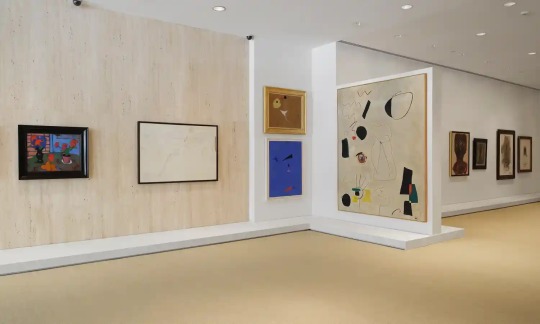
Alexej von Jawlensky: Still-Life with Flowers and Oranges (c 1909) © 2023 ARS, New York. Cy Twombly: Untitled (1961) © Cy Twombly Foundation. Joan Miró: Composition (1926) © Successió Miró / ARS, New York / ADAGP, Paris 2023; Peinture (1927) © Successió Miró / ARS, New York / ADAGP, Paris 2023; Paysage animé (1935) © Successió Miró / ARS, New York / ADAGP, Paris 2023. Jean Dubuffet: Henri Calet Costume Rouge 1947 © 2023 ARS, New York / ADAGP, Paris; Le Jongleur 1944 © 2023 ARS, New York / ADAGP, Paris. Alberto Giacometti: Caroline in a Red Dress (1965) © Succession Alberto Giacometti / ARS, NY 2023; Portrait of Yanaihara (1960-62), © Succession Alberto Giacometti / ARS, NY 2023. Photograph: Bonnie H Morrison
For now, however, the gallery is open to whichever 20 lucky punters manage to score a spot on a tour. Vagueness aside, Arnheim is optimistic about the opening. “I don’t understand what their strategy is. But in the end, they’re doing the right thing, and that’s what’s important.”
For Storr, however, a few days a month is not good enough. “It’s grudging – you need to make a place where people feel comfortable coming in, and I know that many people feel uncomfortable even going to the galleries, which are free.” Indeed, the intrigue surrounding the collection as the result of its previous exclusivity may serve to further entrench a perception of art by well-loved artists as trophy collectibles for tycoons, rather than magnificent works for the city to revel in. Or, as Storr puts it, “just expensive things that somebody else owns and you get a chance to see”.
The reaction to the gallery’s opening on New York’s gallery circuit has been more ambivalent. Some stuck up their noses at its office-building location; some hadn’t even heard about it. For others, a lack of enthusiasm had more to do with the competition than the quality of the collection itself. As Ray Waterhouse, co-owner of the Upper East Side gallery Waterhouse & Dodd, pointed out, the city’s museums are stuffed with fabulous paintings. “So it’s somewhat irrelevant to the New York art landscape,” he said. “I’m not saying it’s not worthy.”
The art world has moved on from Solow’s mid-century taste. But there’s a value to the (intermittent) opening of a small, manageable collection of crowd-pleasers around the corner from MoMA and its long queues. With dynamic curation and a dramatic increase in the number of hours it’s open, the Soloviev gallery could come to be known for the quality of the art it houses rather than for its inaccessibility. As for the social barriers carefully built up by the collection habits of the international super-rich – that damage might take longer to unpick.
Not least in New York City, the art world’s financial capital. The tour ended with a glass of champagne in the building’s swanky subterranean restaurant, Cucina 8½. Afterward, I made my way past Bergdorf Goodman to the 59th Street subway station, where a man sat on the steps with a box of pastels and a cardboard sign which read: “Artist in need.”
#Art | New York | Art and Design | Museums | Culture#Article | Features | Francesca Carington#The Guardian USA 🇺🇸
0 notes
Photo





Morcheeba, Ana Popović, Van Gogh, Kralj Čačka prvi izvođači na ovogodišnjem Belgrade Beer Fest-u
Belgrade Beer Fest, jedan od prepoznatljivih simbola prestonice i najveći festival piva u jugoistočnoj Evropi zvanično je najavio prve izvođače za ovogodišnje 20. izdanje, koje će se održati od 15. do 18. juna na beogradskom Ušću u organizaciji Skymusic-a i Grada Beograda.
Omiljena prestonička manifestacija u godini važnog jubileja na main stage dovodi Morcheebu, svetski poznati britanski bend, koji još od osnivanja, sredinom 90-ih, stvara jedinstvenu mešavinu trip-hopa, elektronske i downtempo muzike. Njihov debi album "Who Can you Trust?" doneo im je lojalne sledbenike i priznanja kritičara, a već sledeći, "Big Calm“ iz 1998. godine, katapultirao ih je do svetske slave. Album je iznedrio hit singlove "Part of the Process", “Blindfold” i "The Sea", a mnogi ga smatraju Morcheebinim remek-delom. U godinama koje slede, Morcheeba je nastavila da se razvija, a jedno od obeležja njihove muzike je upotreba semplovanja i inovativnih produkcijskih tehnika. Izdali su 10 albuma i čak 44 singla i EP-ja, i smatraju se jednim od najuticajnijih bendova na trip-hop sceni.
Drugi veliki headliner je Ana Popović, srpska bluz gitaristkinja koja se smatra jednom od najboljih na svetskoj muzičkoj sceni. Pet puta bila je nominovana za nagradu „Blues“, a njen album „Still Making History“ iz 2007. godine ušao je na Bilbordovu listu bluz albuma, gde je proveo 13 nedelja među 15 najboljih, a dostigao je vrhunac na 4. mestu. Sarađivala je sa najvećim muzičarima današnjice, koji je opisuju kao istinski talenat i snagu u svetu bluza i rok gitare, a njeni nastupi predstavljaju nesvakidašnji spoj electric funk-a, jazzy instrumentala i blues groove-a sa soul ženskim vokalom i neverovatnom energijom.
Van Gogh, poslednji veliki bend stvoren na ovim prostorima koji gotovo četiri decenije beskompromisno kroji domaću rock'n'roll scenu, na radost mnogobrojnih poklonika hard zvuka, nastupiće na ovogodišnjem Belgrade Beer Fest-u. Od „Tragova prošlosti“ sa prvog studijskog albuma „Van Gogh“ iz 1986. godine, preko ,,Svet je moj" iz 1991. godine i antologijske numere „Neko te ima“, pa sve do danas, bend je objavio 11 studijskih i 4 live albuma, 3 kompilacije i 3 video izdanja, sa pesmama koje su postale himne mnogih generacija.
Kralj Čačka, svestrani umetnik čije stvaralaštvo ne podilazi masama i po mišljenju mnogih srpski Tom Waits, još jedan je od izvođača čiji je nastup na ovogodišnjem festivalu piva potvrđen. Kralj Čačka i njegov bend su relativno brzo prešli put od "dobro čuvane tajne domaće muzičke scene" do sastava koji ima kultni status u regionu i o čijim koncertima se govori kao o prvorazrednim kulturnim događajima.
Osim nastupa najvećih svetskih, regionalnih i domaćih muzičkih zvezda, Belgrade Beer Fest će i ovaj put, od 15. do 18. juna, posetiocima ponuditi i brojne duge sadržaje, kao i bogatu ponudu najrazličitijih etiketa piva.
#beer fest#belgrade beer fest#festival#muzika#koncerti#festival piva#belgrade#kralj čačka#van gogh#ana popovic#morcheeba#izvođači
1 note
·
View note






